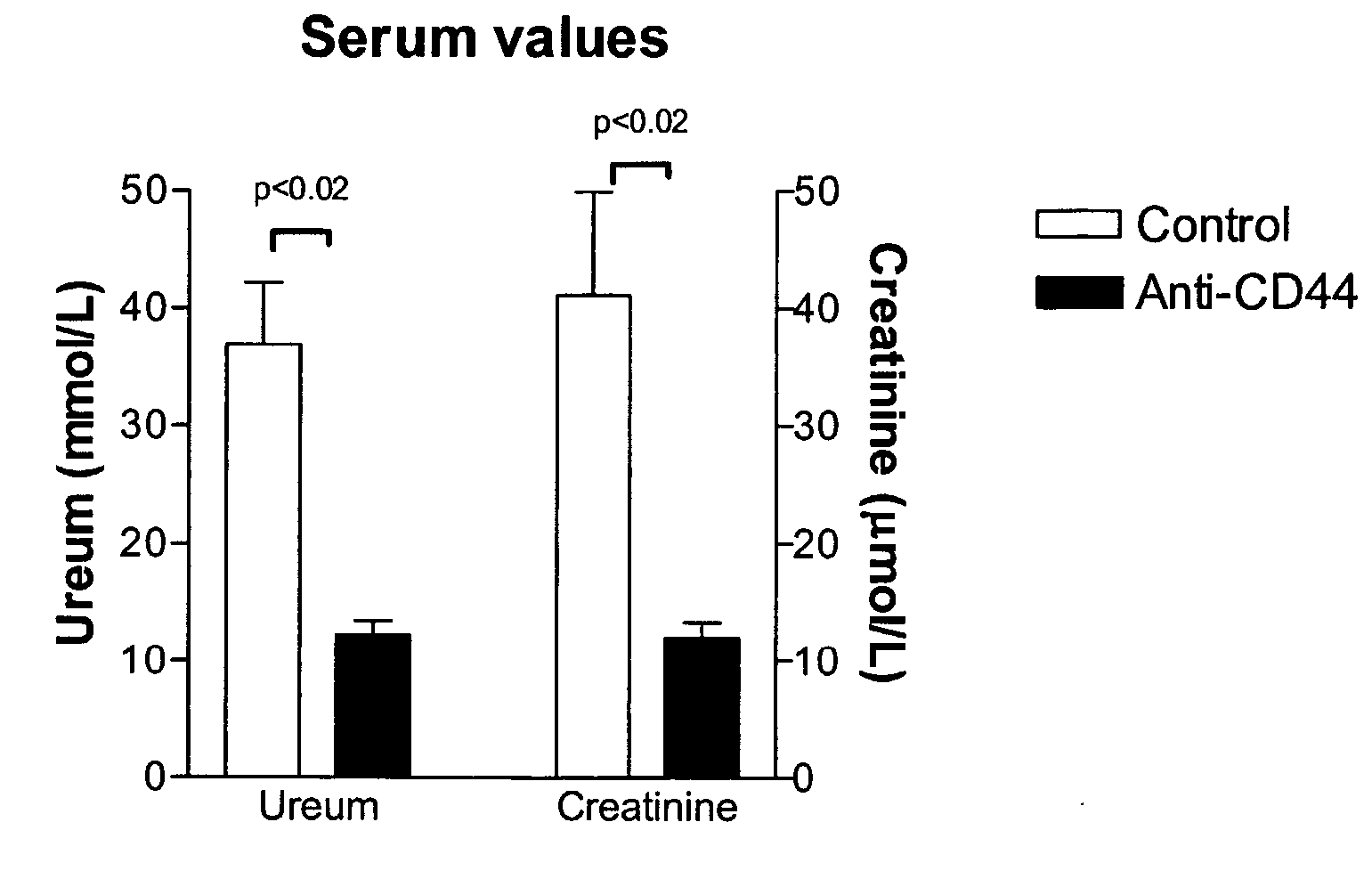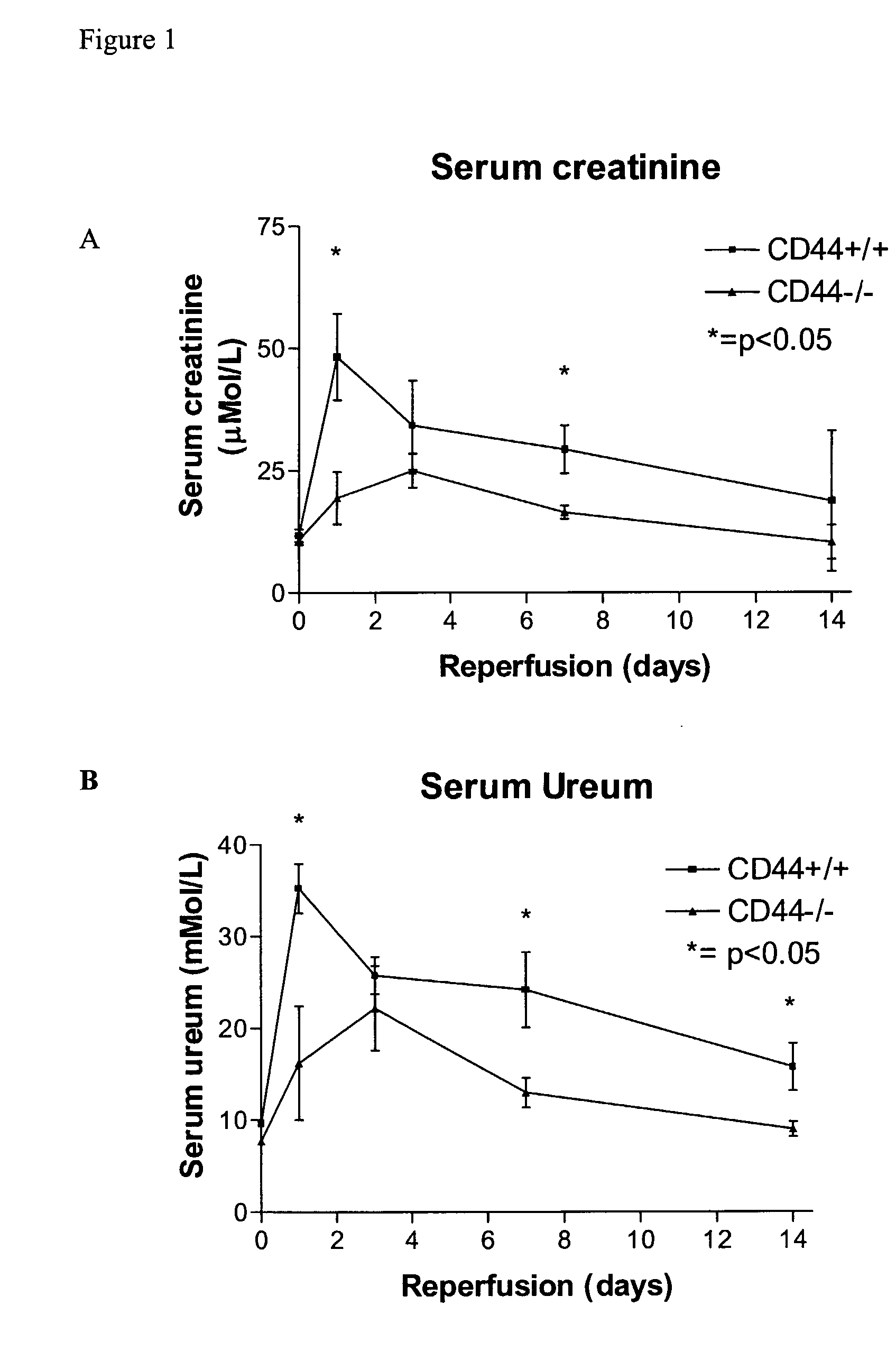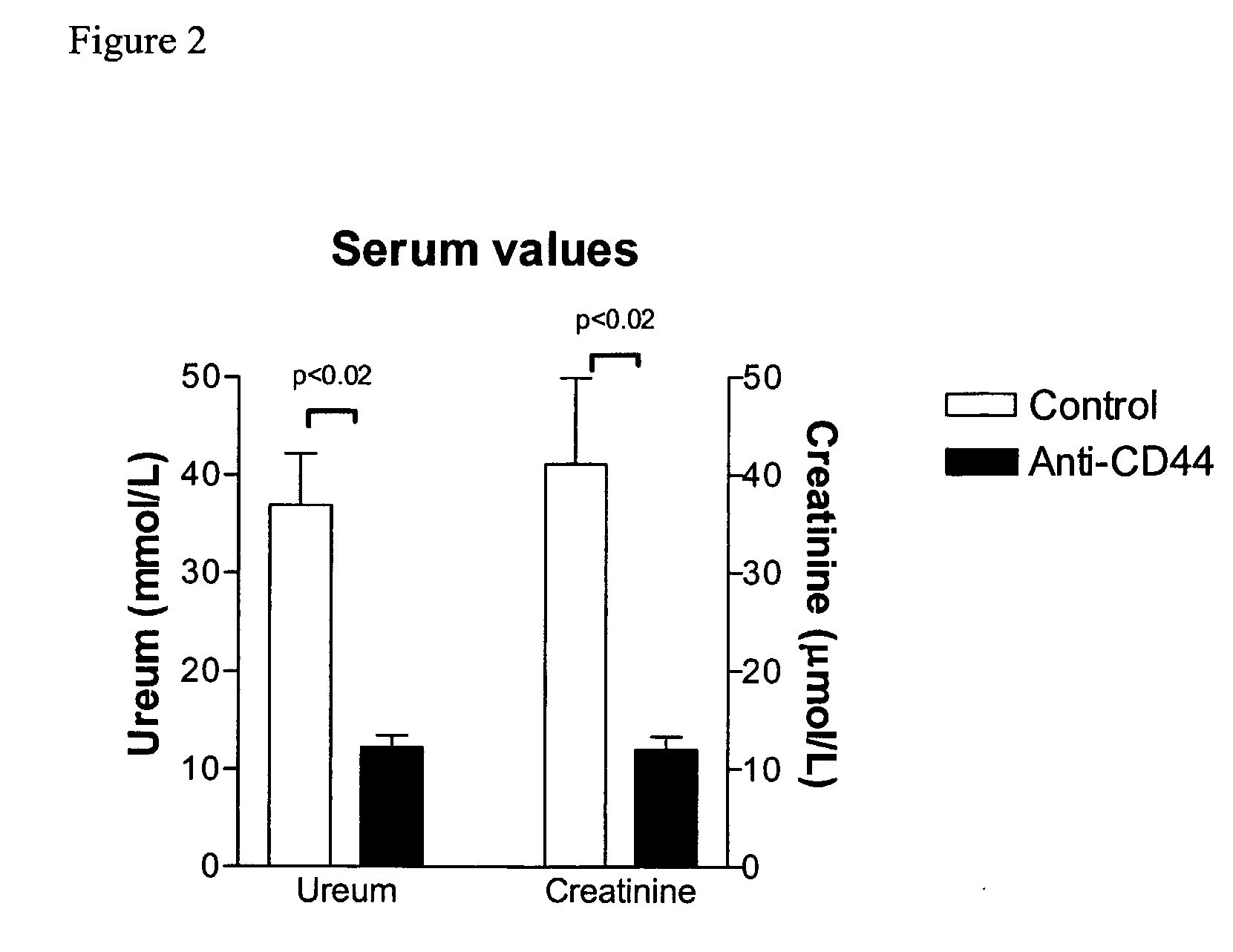Cd44-Targeting for Reducing/Preventing Ischemia-Reperfusion-Injury
a technology of ischemia and reperfusion injury, applied in the field of cd44 binding molecules, can solve the problem that ischemia reperfusion injury is associated with a mortality rate of approximately 50%
- Summary
- Abstract
- Description
- Claims
- Application Information
AI Technical Summary
Benefits of technology
Problems solved by technology
Method used
Image
Examples
example 1
Deficiency or Blocking of CD44 Reduces Ischemia Reperfusion Injury
1.1 Materials and Methods
1.1.1 Mice and Experimental Protocol
[0039] Bilateral ischemia or sham surgery was performed under general anesthesia (0.07 ml / 10 g mouse of FFM mixture, containing: 1.25 mg / ml midazolam (Roche, Mijdrecht, The Netherlands), 0.08 mg / ml fentanyl citrate and 2.5 mg / ml fluanisone (Janssen Pharmaceutica, Beerse, Belgium)) in 6-8 weeks old, male mice. Mice, CD44 knock-out on C57B1 / 6 background (CD44− / −) (Schmits R, F. J. et al, Blood, 1997, 90: 2217-33) and C57B1 / 6 wild type (CD44+ / +) origin were bred in our animal facility. Antibody treated mice received 16 hours prior to surgery a single intra-peritoneal injection of 100 μg anti-CD44 (clone IM7, rat IgG2b, ATCC, Livermore, Calif.) or control IgG (purified rat IgG2b, Pharmingen, Erembodegem, Belgium) (Brennan et al., 1999 Immunology 98(3): 427-35; Weiss et al., 2000, Proc Natl Acad Sci USA 97(1): 285-90). Renal arteries and veins were bilateral...
example 2
Prognostic Value of Serum CD44 Levels for Renal Allograft Rejection
2.1 Patients
[0056] Patients were randomly selected from the patient population of the Academic Medical Center of the University of Amsterdam undergoing renal transplantation. Urine and serum samples from all patients were collected 24 hours before renal transplantation was performed. at the time of biopsy. The patients were followed for more than one year and clinical episodes of rejection assessed and confirmed by renal biopsies. There were no statistical difference between the rejecting and non-rejecting patients regarding sex, age, renal function before transplantation, immunosuppressive treatment, primary renal disease. Serum samples were also obtained from a control group of 10 non-transplanted healthy volunteers
2.2 ELISA's
[0057] The Elisa used for detection of soluble CD44 in serum was purchased from Bender Medsystems (Vienna, Austria) and was performed according to the manufactures instruction.
2.3 Resu...
PUM
| Property | Measurement | Unit |
|---|---|---|
| concentrations | aaaaa | aaaaa |
| area | aaaaa | aaaaa |
| soluble CD44 | aaaaa | aaaaa |
Abstract
Description
Claims
Application Information
 Login to View More
Login to View More - R&D
- Intellectual Property
- Life Sciences
- Materials
- Tech Scout
- Unparalleled Data Quality
- Higher Quality Content
- 60% Fewer Hallucinations
Browse by: Latest US Patents, China's latest patents, Technical Efficacy Thesaurus, Application Domain, Technology Topic, Popular Technical Reports.
© 2025 PatSnap. All rights reserved.Legal|Privacy policy|Modern Slavery Act Transparency Statement|Sitemap|About US| Contact US: help@patsnap.com



